All about balcony railing
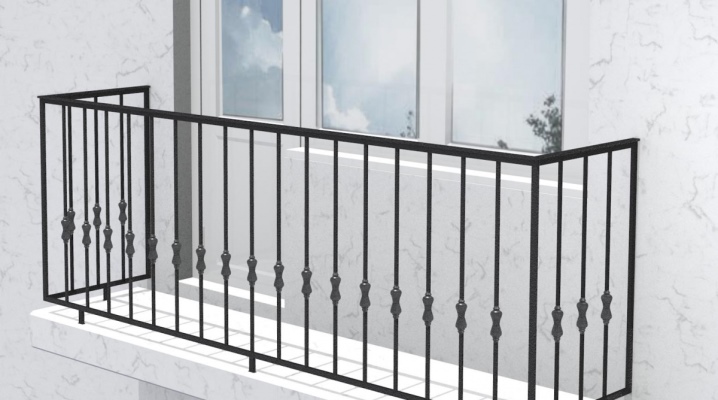
Beautifully executed balcony railings made of metal, wood, plastic or glass can become a decoration of the house, as well as skillfully complete the image of the facade as a whole. Fences serve not only for the safety of the space of the loggia or balcony, but also perform an aesthetic function. It is for this reason that designers attach great importance to balcony railings.
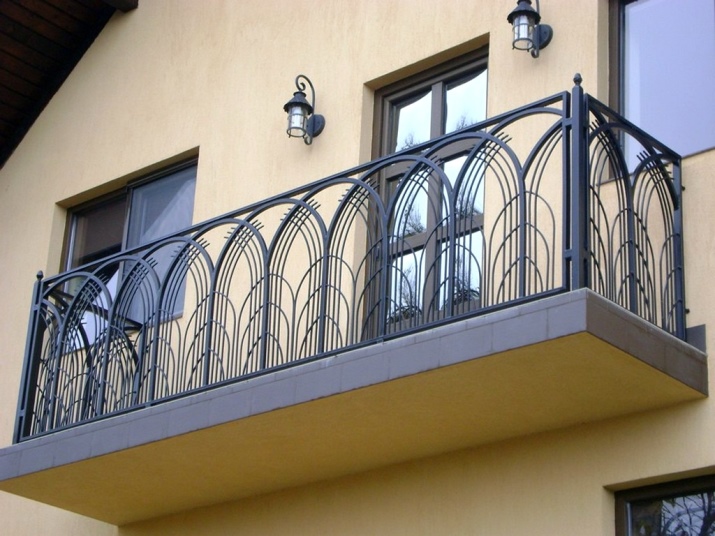

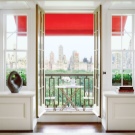

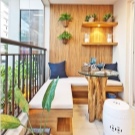
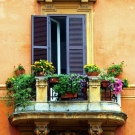
Description and requirements
To be safe for others, balcony rails must obey the requirements of GOST. Naturally, GOST does not regulate the appearance of the building, but takes into account the safety issues of the structure. That is, the shape, material and design of the loggia, balcony or terrace can be absolutely anything and correspond only to the personal taste of the owner. The main thing is that the strength of the entire structure leaves no doubt about the reliability, and for this, qualified specialists are usually attracted.
The basic safety requirements can be found in the normative documents SNiP, which regulate the device of such structures. It is worth remembering that ignorance of the law does not excuse one from responsibility. The main criterion here, of course, is the growth of the people living in the house.
SNiP also regulates the parameters of the parapet and the frame, which must be metal.
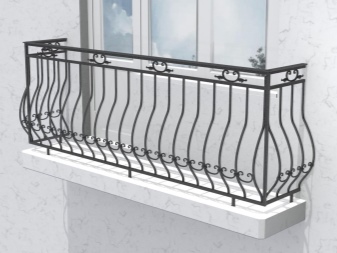
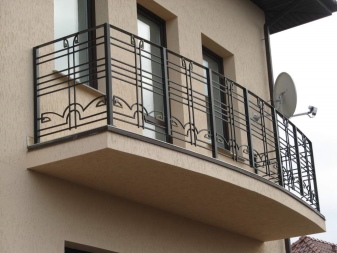


According to GOST, structures of this type must meet the following criteria:
- connections should be strengthened at the weakest points;
- the distance between the rods or balusters must be no more than 12 cm;
- the structure must be resistant to loads so that one square meter can withstand at least 100 kg of weight;
- an important role is played by the non-traumatic structure, that is, sharp elements should be excluded and the distance between the base and the edge of the parapet should be ensured so that a child or pet cannot get stuck in it;
- the standard height of the fence is usually 80-120 cm, that is, it should reach approximately to the waist of an adult;
- fastening is installed only double - to the walls of the building and its base.
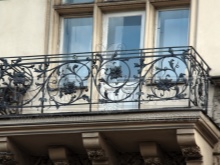
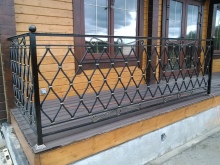
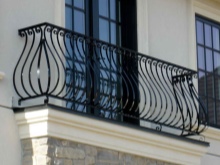
The requirements according to GOST also contain calculation formulas that must be used when designing a building. For example, the distance between the floor and the horizontal beam of the balcony must be at least 1 meter in ordinary buildings and at least 1.2 meters in childcare facilities (provided that this is a multi-storey building up to 30 meters high).
This document also stipulates certain requirements for terraces. If the terrace is located at a distance of more than 60 cm from the ground, it must be surrounded by a fence 1 m or more high. It is recommended to install a parapet of 1.07-1.2 m on the second floor. The same requirements apply to loggias.
Balcony structures are also necessarily treated with protective coatings to avoid material corrosion. Various weather conditions (temperature drops, rain or snow) can contribute to its damage.
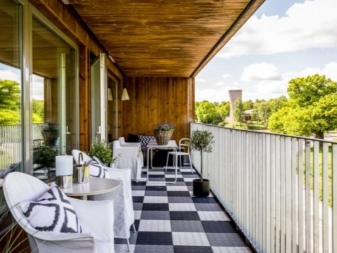
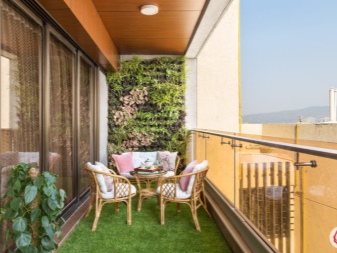
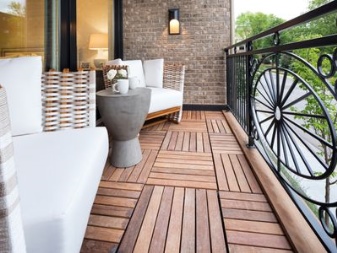
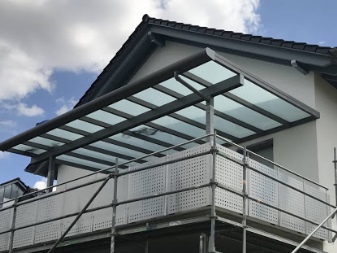
In addition to SNiP and GOST, it is also worth paying attention to the law "On fire regime". According to it, it is strictly forbidden to load fire escapes or hatches with household rubbish, to dismantle or weld these structures, otherwise the offender will be held administratively liable.
When creating balcony railing, they usually resort to metals. - aluminum, cast iron, stainless steel, and sometimes combined compositions of several materials are created.It is selected based on the style of the house and the appearance of the facade. For example, in country houses from a log house, you can often find wooden railings. And forged or plastic elements harmoniously fit the balcony into the landscape of a big city.
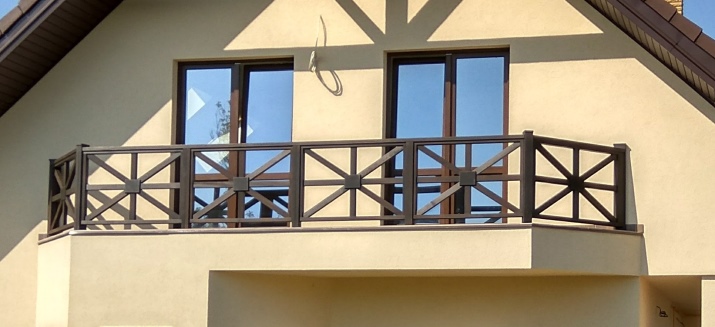
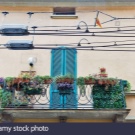
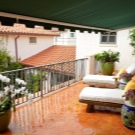
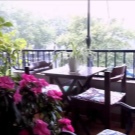
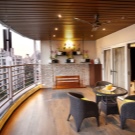
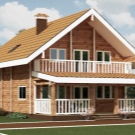
Species overview
Railings are classified according to principles such as:
- type of installation;
- characteristics and design features;
- material.
Balcony railings differ in their design: can be lattice, screen or combined. The first type of construction implies that during construction, not a single-piece screen is used, but lattice elements with an arbitrary design. Screen fences are made up of vertically positioned supports. They have a screen made of glass, metal or plastic.
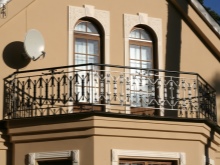
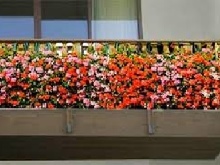
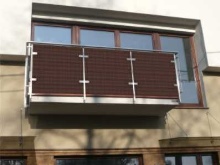
Combined designs are made of different materials, thus allowing the most daring design ideas to come true. The grille and screen can coexist in this design. Also, regardless of the type of balcony, you can decorate the railings to your taste, for example, give them any shape or paint them in your favorite color.
Also there are several types of balcony structures according to their appearance... For panoramic glazing, popular among lovers of beautiful views, it is usually required to obtain permission from the appropriate authorities. h
Balcony structures are also necessarily treated with protective coatings to avoid material corrosion. Various weather conditions (temperature drops, rain or snow) can contribute to its damage.
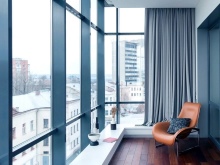

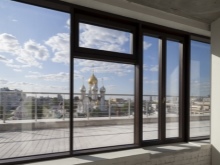
This method will visually increase the area of the room and get a delightful view, but it is worth remembering that such beauty will require reverent care. Moreover, with frameless glazing, it is impossible to install mosquito nets. Glazing with frame - a more reliable option that will allow you to fence off insects with a net and install noise insulation.
French balcony railing can be distinguished as a separate type. In this case, the railing is installed directly in front of a window or door from the street side, and the platform itself is of an insignificant size. The French balcony is characterized by ease of installation and no need to insulate the lower part.
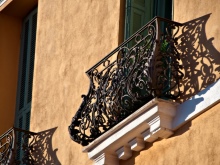

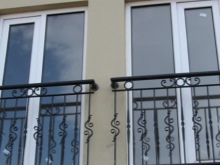
The next type is transitional balcony... This design has extremely high safety requirements.
The main advantage of transitional balconies is their convenience for apartment buildings that need common areas.
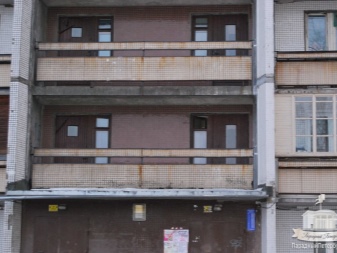
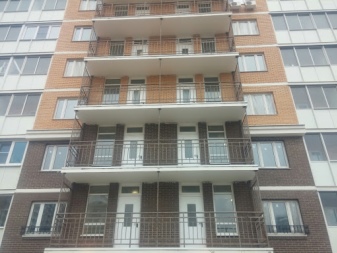
As for the terrace, when designing a country house, you can give it any look or shape. It can be built around the entire perimeter of the building or extended as a ledge above the porch. In the case of urban buildings, the best solution would be to design the balcony in accordance with the style of the facade itself. At your own dacha, you can create a design exclusively to your liking.
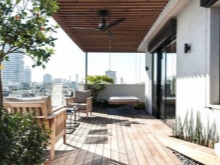
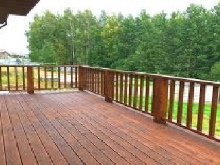

There are also two options for installing the railings:
- welded;
- prefabricated (composite).
Fences can be made of wood, plastic, metal or glass. Sometimes other materials are used, however, this article will highlight exactly the above options.
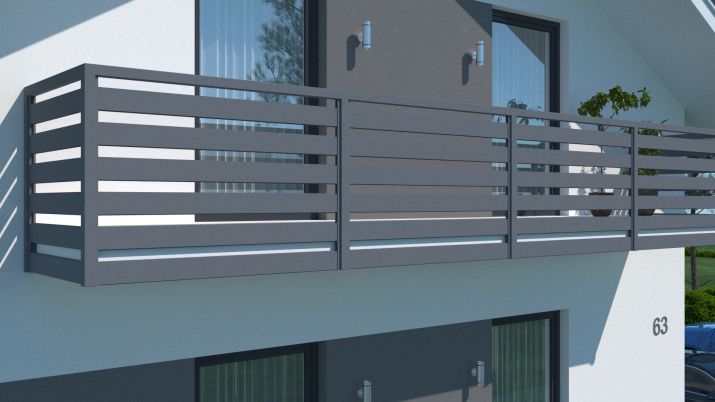

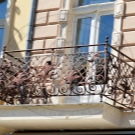
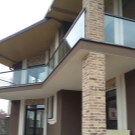
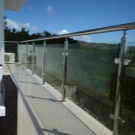
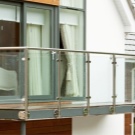
Materials (edit)
The materials used in the construction of balconies differ in technical characteristics and features of operation. When planning, you should immediately choose the right material and create a design taking it into account.
Wood
Wooden fences are a frequent choice of summer residents. This material has been popular for several centuries, and hence the custom of installing such fences in houses made of log or timber. The tree always looks natural, stylish and respectable, and you can design it in completely different ways, because the material is located for various reincarnations. For example, you can order delightful carved railings and balusters from specialists.Installing a wooden structure is also relatively easy.
Wood blends well with forged steel. The combo options look nice and are generally very durable. Wooden fences, above all, are ideal for nature conservationists, because they are completely environmentally friendly.
Of course, the material has its own limitations... Among them is his exactingness. The tree must necessarily be processed with all kinds of impregnations, paints and varnishes that protect the material from decay due to the negative impact of external factors.
This procedure should be repeated regularly so that the balcony does not lose its pleasant appearance.
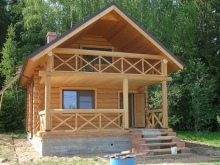
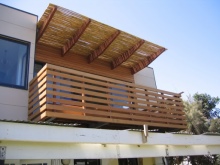
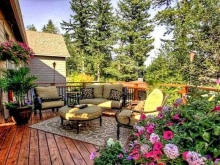
Plastic
As a rule, plastic is hardly used separately from other materials. It can be combined with glass or metal to make the railings look organic and have high strength. Plastic balcony structures are often found in modern city houses.
Among the advantages of the material, one can also highlight its low cost and low weight.... Plastic is not only affordable, but also durable and resistant to environmental influences. Neither sunlight nor humidity affects the appearance of the fence in any way.


A house with plastic balcony railings looks presentable due to the fact that they are visually similar to glass ones. However, ordinary people often confuse plexiglass or polycarbonate fences with clean glass. If the choice fell on polycarbonate, then it is recommended to take thick sheets of 10 mm or more, otherwise they will quickly wear out.
The main disadvantage of plastic fences is their fragility, flammability and exposure to low temperatures. For this reason, it is highly recommended to combine plastic with a lattice screen, which will provide additional support.

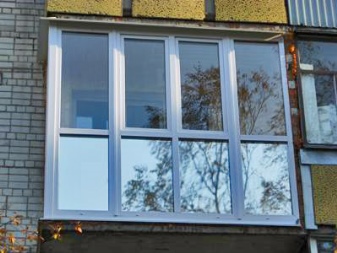
Metal
In the urban environment, fences made of various metals are becoming more and more popular - stainless or forged steel, as well as conventional steel with a chrome coating. The metal construction combines elegance and practicality. It is strong, durable, easy to maintain and meets all standards.
The most flexible material for creating an elegant design is, of course, forged steel (especially for French balconies). And welded, chrome-plated structures are characteristic of the high-tech style. The handrails and the frame are made of a shaped tube.
However, the options listed above are sometimes not available for the average man in the street, therefore, balcony railings from a professional sheet are becoming more and more popular. It has a low cost and can be installed without the involvement of a specialist. The profiled sheet is durable, practical, but at the same time prone to corrosion. Moreover, this material is also quite "loud" (during the rain, for example, the profiled sheet will vibrate and make appropriate sounds).
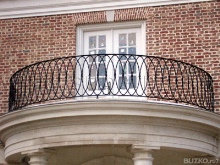
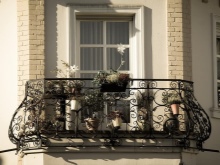
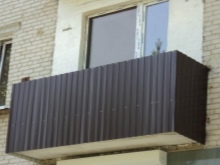
Glass
Glass railing looks expensive, presentable and evokes associations with business centers or luxury homes. Ordinary housing estates rarely have this luxury. Glass railings, due to their fragility and massiveness, are usually reinforced with a metal frame or lattice.
Glass is an excellent solution for those who wish to have a panoramic view in their house or apartment.
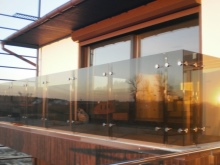


Selection Tips
The unconditional rule for decorating a balcony is its compatibility with the style of the entire building. Due to the fact that architectural aesthetics are often neglected, there are so many houses in our country that have an extremely ridiculous appearance.
When building, you should immediately take into account your financial capabilities. And if the desired balcony is too expensive, you can always turn to specialists - they have ready-made solutions and many alternatives that you may like.
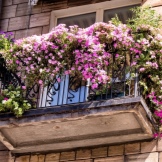
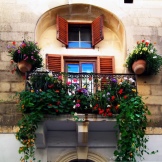
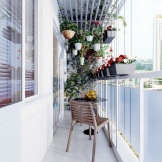
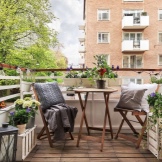
Typically, country houses are often complemented by carved wooden balconies. Metal or glass balconies and loggias organically complement modern city buildings.Forged balconies will look amazing on classic historic buildings. Here you can dwell on twisted ornaments and floral motifs (grapevine, leaves, flowers).
As for business, shopping centers and other houses in this style, they are often faced with porcelain stoneware or stone. It is customary to follow the principles of minimalism. Ensembles made of chrome-plated stainless steel look truly luxurious. If the choice falls on a transparent, frosted or stained glass railing, then it must be reinforced with a metal frame.
It is customary to take massive, thick glass so that it can withstand any load.
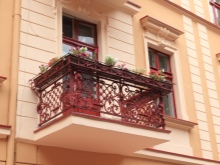
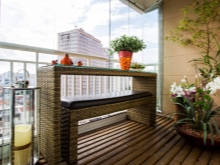

The main criteria that are recommended to be considered when creating a railing design project.
- Durability and resistance to wind loads... This criterion plays an important role in the selection of plastic and glass fences. These materials are highly wind resistant and may not withstand strong gusts of wind.
- Material reliability. It should not change its properties under the influence of the environment. The ideal material is considered to be non-corrosive, does not collect moisture and ice.
- Lifetime. When choosing a material, one should rely not only on its aesthetics, but also on how long it can last.
- Aesthetics... As it has been said more than once, the railings must harmoniously fit into the style of the building.
Fences have as their main purpose to ensure the safety of people living in the house. Therefore, when designing a balcony, it is worth paying special attention to the height of the parapet and the distance between the balusters.
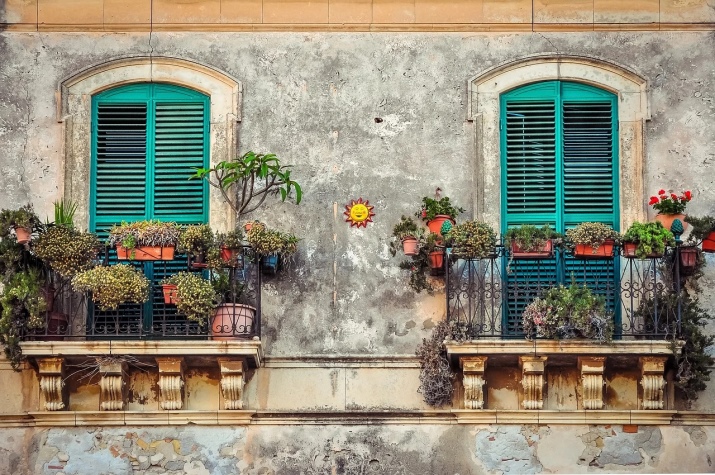
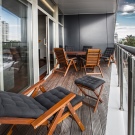

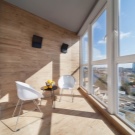
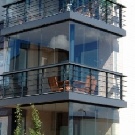
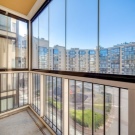
Installation features
Before designing a balcony railing, special embedded fasteners are always installed. They are mounted into the wall, and after that the fence itself is installed. Such fasteners firmly fix the railing and are metal strips and steel reinforcement. According to GOST, they must be double.
Methods for installing fences are as follows.
- Made... The prefabricated structure is assembled from various parts at the construction site. Parts are delivered directly from production, after which a frame is constructed from them, and then all other elements are attached to it.
- Welded... In production, a one-piece fence is produced by welding, which is then installed using anchor bolts.
The above methods are relevant for all balconies except wooden ones.
Also, do not forget about the legal side of construction. Installation work must be carried out in strict accordance with the rules for installing balconies. Otherwise, you may receive a large fine or complaint.
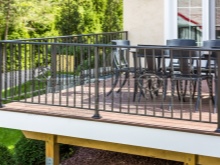
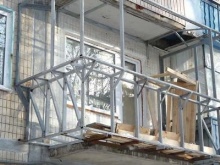
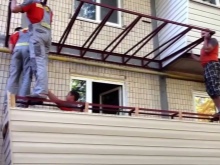
Construction in an urban environment is recommended to be accompanied by fencing and warning signs.
Moreover, installation work must be agreed with the management company of the house. And if the house is included in the list of state-protected property, even a change of railings will have to be coordinated by the entire council of residents.
About building a balcony with your own hands, see below.













The comment was sent successfully.